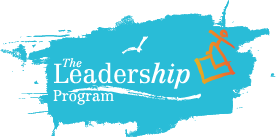One of the tricky things about teaching conflict resolution skills in schools is how to frame the approach. A “you need conflict resolution skills” approach may meet resistance, a defensive stance from the perspective that school community members know how to resolve conflicts just fine, thank you, as you can see by their latest school performance report, and that they have so much on their plates anyway that there is no room to add anything else.
But the truth is that as part of ongoing leadership development training, all of us could use some support in finding strategies to resolve conflicts peacefully and effectively.
Conflict resolution should be distinguished from bullying prevention—not all conflict is bullying, and the difference is important to recognize: bullying involves an imbalance of power used deliberately to target someone less powerful with negative actions and/or words, repeatedly over time. Conflict can be a one-time occurrence between equals. Effective team building exercises may be helpful in reducing conflict, but incidents of conflict occur inevitably in all walks of life, including school communities.
Research shows that conflict resolution skills are among the top five most important social emotional learning skills that help us develop our emotional intelligence, which in turn has been shown to improve academic achievement such as standardized test scores and ultimately to be a more important factor in determining success in life than academic intelligence.
So how do we teach these skills to students and to adults? Here are some approaches you can try:
-
Appeal to People’s Sense of Self
A strengths-based approach is the best way to engage people in learning new social emotional skills. What leadership qualities do they already demonstrate? Maybe you’re working with teens who are off on the wrong track, using their charisma to engage their friends in mischief. Rather than trying to quash the charisma, present the students with opportunities to re-direct it toward positive leadership.
-
Make it fun
Adults and students both engage more fully in fun, interactive activities than in talk and chalk teaching. Create an atmosphere of fun and then process the lesson of the activities using something like the Experiential Learning Cycle, to ensure participants have a solid take-away and an example of how to apply the lesson to their own lives.
-
Plan on taking the time needed
Conflict resolution skills cannot be taught in a day. Plan on a minimum of twelve to fifteen sessions and determine how frequently you can schedule them. It’s best to leave a few days minimum so participants have time to absorb each lesson, but not more than a week, so you maintain a steady flow.
-
Ask, don’t tell
Enlist participants to share their ideas on what works and doesn’t work in resolving conflicts. Most of the time it isn’t that people don’t know what to do, it’s that they don’t know how to overcome their emotional reactions in the heat of conflict. Conflict resolution skills should focus on strategies to bring people back to the more rational decision-making parts of their brains.
-
Dispel myths
Young people are often under the misconception that kindness is a show of weakness and that they are in control of a situation when they use violent words or actions to respond to conflict. Remind them that they can only control themselves and cannot control anyone else’s responses. Choose lessons and activities that demonstrate clearly that allowing themselves to be emotionally reactive is giving up control of themselves, that in order to be in control, they have to develop more reasonable conflict resolution strategies.
-
Scaffold skills taught
Don’t dive into the deep end on the first day by addressing a serious conflict or the like right away; it’s too soon. Start with less risky topics like self-awareness and self-management, two primary social emotional learning skills. Build from there gradually, with activities focusing on cooperation, communication, and other necessary competencies. This type of scaffolded approach helps build trust within the group and provides a solid foundation for the more complex skills involved in resolving conflicts.
-
Try it on for size
Once you get to the meat of the conflict resolution strategies, engage participants in role plays and dialogues so they have enjoyable, informative opportunities to try out the skills they are learning. While the situations in role plays are not real, they offer the experience of using the approach learned in a safe space, in which participants risk no real-life consequences and they can start to accustom themselves to using their new skills.
-
Encourage and applaud
Even the most experienced adults are not perfect in their ability to resolve conflicts peacefully. Encourage participants to keep trying their new skills even when they don’t get the hang of implementing them right away. Celebrate their progress as well as their successes. None of us is perfect—there will always be room for more growth throughout our lives.



Comments [0]
Click here to read/write comments